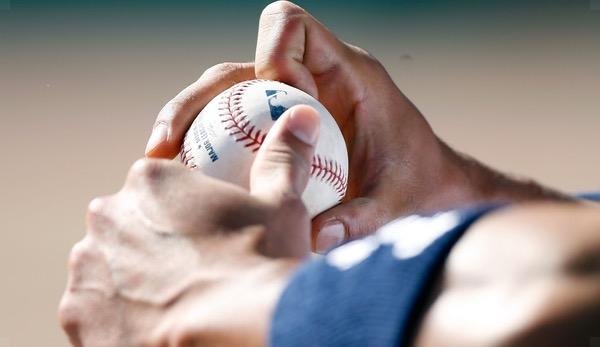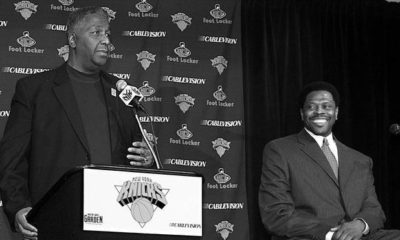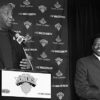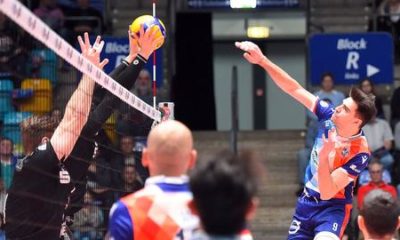US-Sport
MLB: Outwit Hitter Pitcher – Why Fastball Cannons Are No Longer Sufficient Today
The demands on the pitcher of the MLB have increased abruptly in the last years. While at the beginning of the decade a clumsy fast ball was enough to make the opponent’s batsmen look weak, today more than ever it needs a comprehensive repertoire of different throwing styles. What are the pitcher’s options?
Baseball brings with it a natural economic cycle of the balance of power between pitcher and hitter. One of the two sides seems to dominate for several years until the pendulum swings in the other direction.
In recent years, a trend has developed towards a league that is more friendly to the hitters. While baseball – the game device as such – probably has an influence on the higher number of home runs hit, another reason is obvious.
The hitters have increasingly adapted to the pitching style of the league, and can now deal with it much better than a few years ago. At the beginning of the decade, the Aces still dominated the game, and they did so mainly with a pitch: the fast fastball.
That’s why the Aces have been relying more and more on the classic pitch in recent years, and are constantly increasing their speeds. In the 2017 season, ESPN Stats & Information Group recorded a total of over 110,000 fastballs fired at 95 miles per hour or faster. By comparison, only five years earlier there were less than half as many.
“It’s unbelievable how many now get to 95,” says Yankees left-hander CC Sabathia about the evolution of pitching style in the MLB: “When I started my career, it was completely different.
The problem for throwers: over the last few years, the hitters have become better and better prepared for this. While three years earlier they had an OPS of .654 against these fast pitches, in 2017 they stood at .734, an improvement of over 12 percent – in baseball, where nuances often determine the playoff entry of a franchise, this difference means the world.
“If you get a 97-mile fast ball today, it won’t feel so hard,” explains Jeremy Affeldt, former relief and three-time World Series champion. “You just see these balls more and more often, that makes it easier.”
If you look at the numbers of hitters compared to all pitch types, you can also see an increase in performance: over the last three years the hitters have increased by 50 points, so the level on the plate generally rises. Nevertheless, the relative improvement in fast fastballs remains significant:
The fact that Hitter can now deal well with fast fastballs has not gone unnoticed by the managers of the leagues either. “It’s a fine line,” says A.J. Hinch of the reigning champions, the Houston Astros. “Some guys are good with speed, some aren’t. Therefore, we would prefer to have various options to attack Hitter. We don’t want just speed.”
Affeldt is also certain: “If the hitters are better prepared, we will see more guys throwing below the average speed to get more outs”.
What options do the pitcher have to get past the men at less speed? You try Breaking Balls, a throwing technique in which the ball changes direction in flight. These are further divided into special pitches.
First of all, there is the slider, which is the second most used pitch behind the classic fastball in the current season. The basic idea is to give the ball a clear sideways rotation and a slight backward rotation.
At first, the ball looks like a normal fast ball, but breaks out in an unexpected direction just before the battery. Sliders are also on average five to ten miles slower per hour than fastballs.
However, the risk of injury is higher with such breaking balls, as the throwing technique and the hand position sometimes differ significantly from a natural grip.
The Curveball is thrown even slower. In most cases, a classic topspin, a forward rotation, ensures that the ball continues to fall. This is usually referred to as a 12-6 curve ball, as it looks to the batsman as if the pitch starts high – i.e. at 12 o’clock – and then breaks out downwards – at 6 o’clock.
Almost as popular as the Curveball is the Changeup. This should be indistinguishable from the throwing movement of a fast ball, but is usually thrown about 10 miles slower per hour. Ideally, the timing is wrong with hits and they miss the pitch with a swing and miss.
Trevor Hoffman, one of the best relievers in MLB history, developed the changeup to perfection after a shoulder injury. “I grabbed the balls at the back of my palm,” says Hoffman, “deception, accuracy and self-confidence are much more important than pure speed.”
Deception and camouflage will become increasingly important for pitchers in the coming years in order to turn the tide again and to turn the balance of power in their favour. Until then, however, we can look forward to a few more months and years with many hits and home runs.


















You must be logged in to post a comment Login